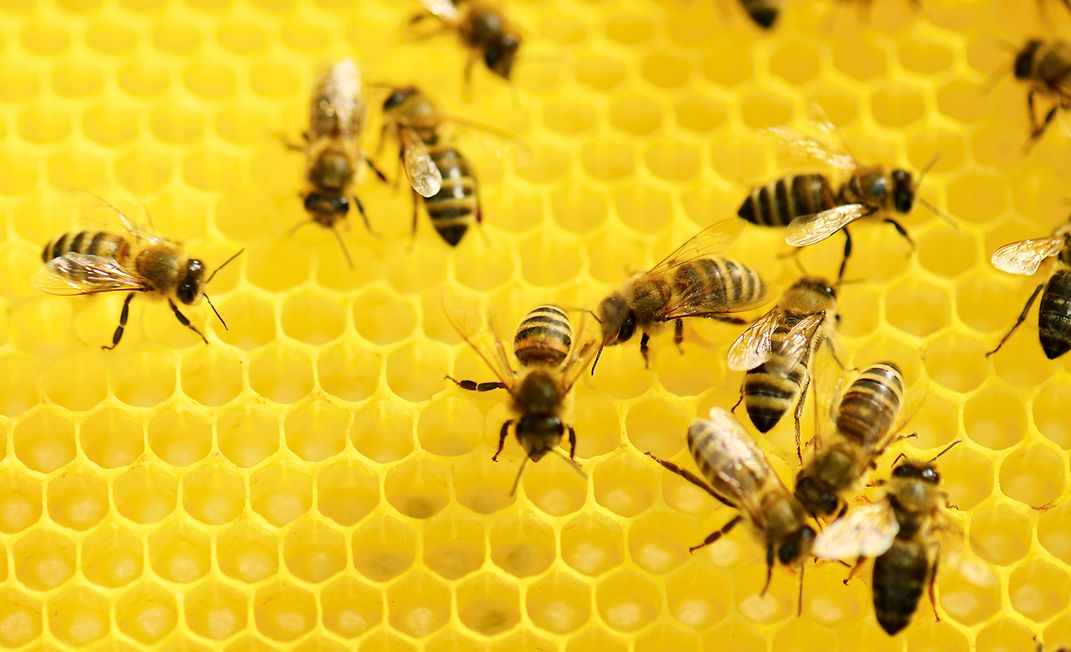What is Pollination?
Pollination is how plants create the next generation their species; oftentimes with the help of pollinators. For pollinators and pollinator-dependent plants, the relationship is a two-way street. Pollen provides a good source of protein for species such as honeybees, while the nectar produced by the flowers of the plant are a great source of carbohydrates for many animals (not to mention a sweet snack!). In exchange for providing these important nutrients, the animals help distribute the plant’s pollen and aid in reproduction and population growth. Pollination by animals can also promote plant diversity, which is great for adding genetic strength and resilience.
Who are the Pollinators?
Many species of bees, including honey bees, leafcutter bees, mason bees, bumblebees and other wild bees are all excellent pollinators for a massive variety of crops that we use on a daily basis. In fact, approximately $14 billion worth of crops are pollinated by honey bees each year, according to the American Beekeeping Federation. Bees are often referred to as “super pollinators” due to their wide range of target plants and significance in pollinating agricultural crops. While bees visit flowers to forage on their pollen and nectar, pollen becomes attached to them and gets dropped onto new flowers at each visit.
The Problems for Pollinators.
Habitat Loss
With the expansion of industrial agriculture and human development, many habitats have shrunk, fragmented, or disappeared completely. This includes natural spaces containing important forage and nesting sites for wildlife species, including pollinators such as birds and bees. Studies have shown that declines in pollinator abundance align with increasing habitat fragmentation (Rathche and Jules 1993).
Climate Change
Changing climate conditions have caused mass movements of temperature gradients, causing flowering plants to grow farther north and leave behind their pollinators. Although many pollinator species such as bees are very adaptive, changing distributions of pollinators and flowering plants have been causing a displacement in ecosystem dynamics.
Pesticides
Pesticides are used to deter and kill unwanted pests and weeds for crops and flowers. However, they often end up destroying non-target species such as honey bees. The use of harmful pesticides and other anthropogenic pressures are one of the leading causes of pollinator declines and losses (Vanbergen 2013).
Invasive species
When humans bring new species into a novel environment, they may have a competitive edge over the native species and begin to overtake niches (the position of a species in an ecosystem). This can result in high levels of competition and predation for native species, including pollinators.
Diseases and parasites
A combination of the above factors can lead to the increased spread of non-native parasites and diseases. In the case of honeybees and other native bee species, parasites such as varrora mites have caused the collapse of colonies and population bottlenecks.
The Pollinator Solution
What you can do for bees and other insects:
-
Practice sustainable and insect-friendly agricultural techniques, including the elimination of harmful pesticides.
-
Plant larval host plants in your garden for moths and butterflies.
-
Create more butterfly gardens and trails at schools and parks.
-
Distribute ground nests and bee blocks for native bees.
-
Buy raw, local honey to promote sustainable and natural beekeeping practices.
Reference
“Pollinators: the Ultimate Providers.” The Honeybee Conservancy, thehoneybeeconservancy.org/pollinators/.


